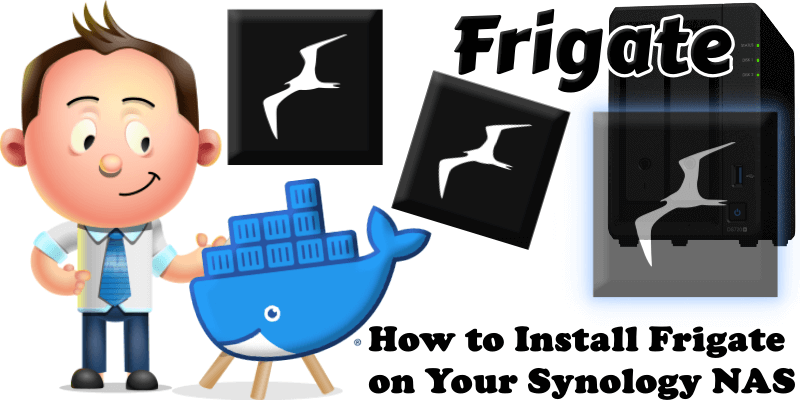
Frigate is an open source NVR built around real-time AI object detection. All processing is performed locally on your own hardware, and your camera feeds never leave your home. In this step by step guide I will show you how to install Frigate on your Synology NAS using Docker & Portainer.
This guide works perfectly with the latest Frigate v0.16.2 release.
STEP 1
Please Support My work by Making a Donation.
STEP 2
Install Text Editor via Synology “Package Center”. (Mandatory STEP.) If you already have Text Editor installed on your Synology NAS, skip this STEP.
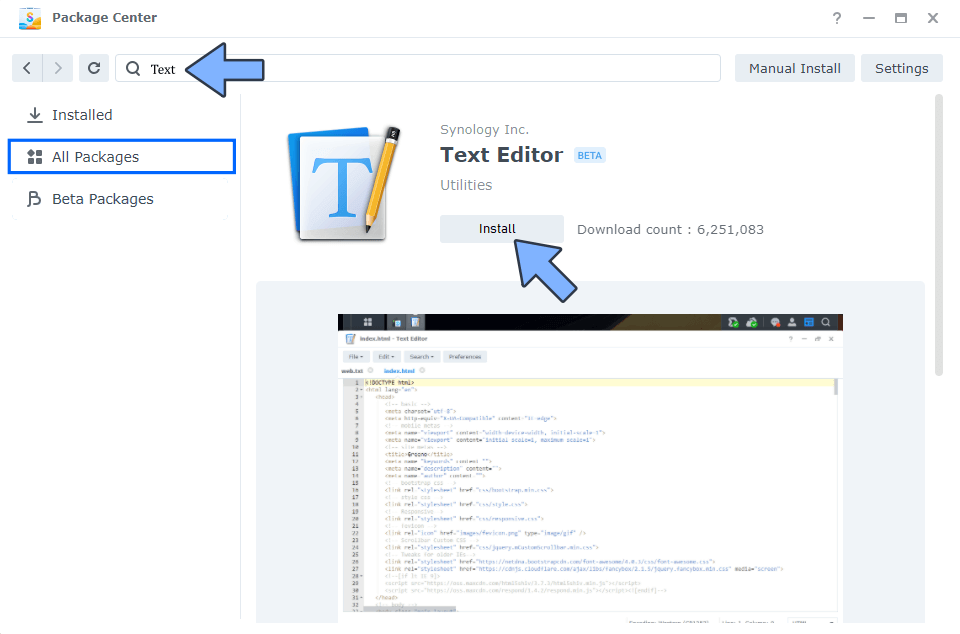
STEP 3
Install Portainer using my step by step guide. If you already have Portainer installed on your Synology NAS, skip this STEP. Attention: Make sure you have installed the latest Portainer version.
STEP 4
Go to File Station and open the docker folder. Inside the docker folder, create one new folder and name it frigate. Follow the instructions in the image below.
Note: Be careful to enter only lowercase, not uppercase letters.
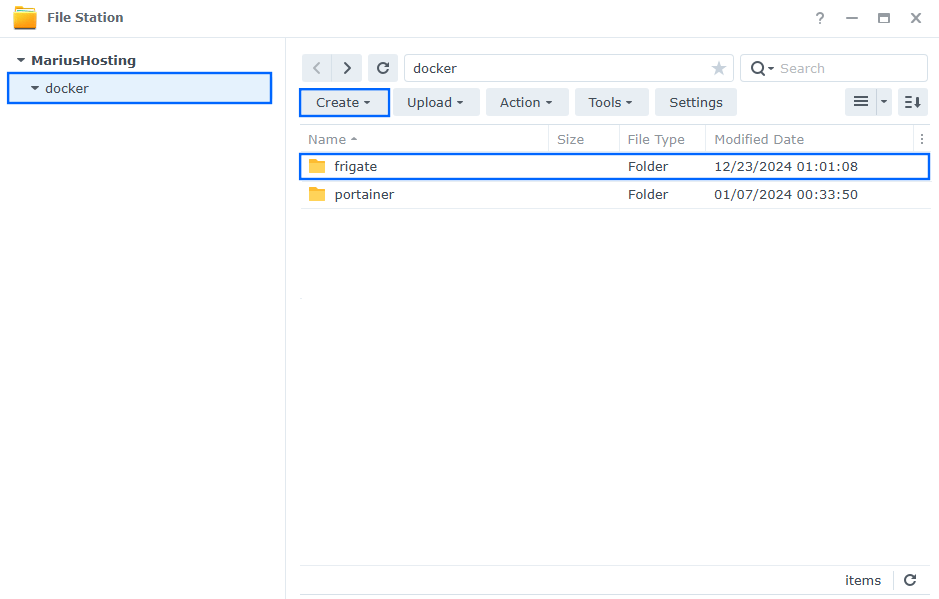
STEP 5
Now create two new folders inside the frigate folder that you have previously created at STEP 4 and name them config and media. Follow the instructions in the image below.
Note: Be careful to enter only lowercase, not uppercase letters.
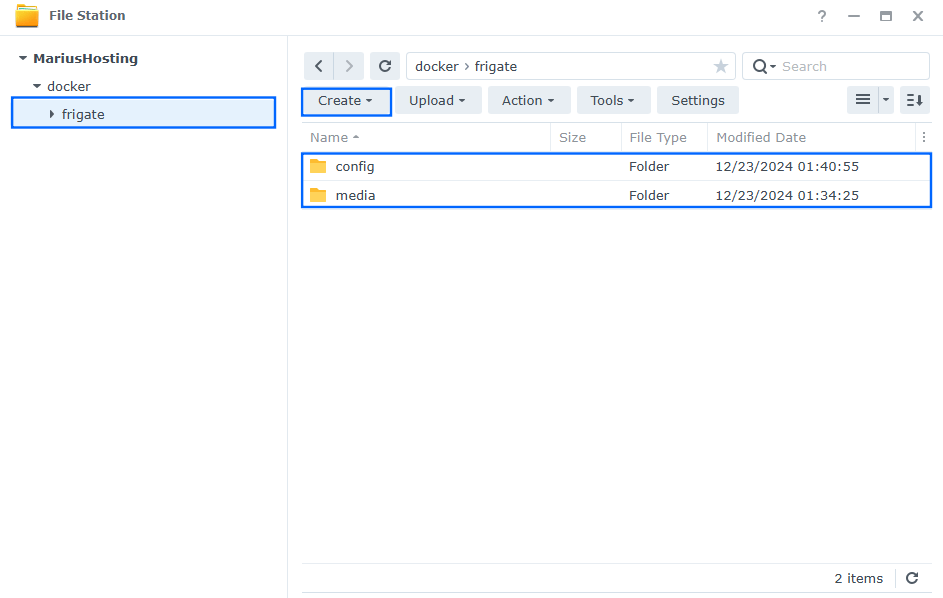
STEP 6
Log into Portainer using your username and password. On the left sidebar in Portainer, click on Home then Live connect. Follow the instructions in the image below.
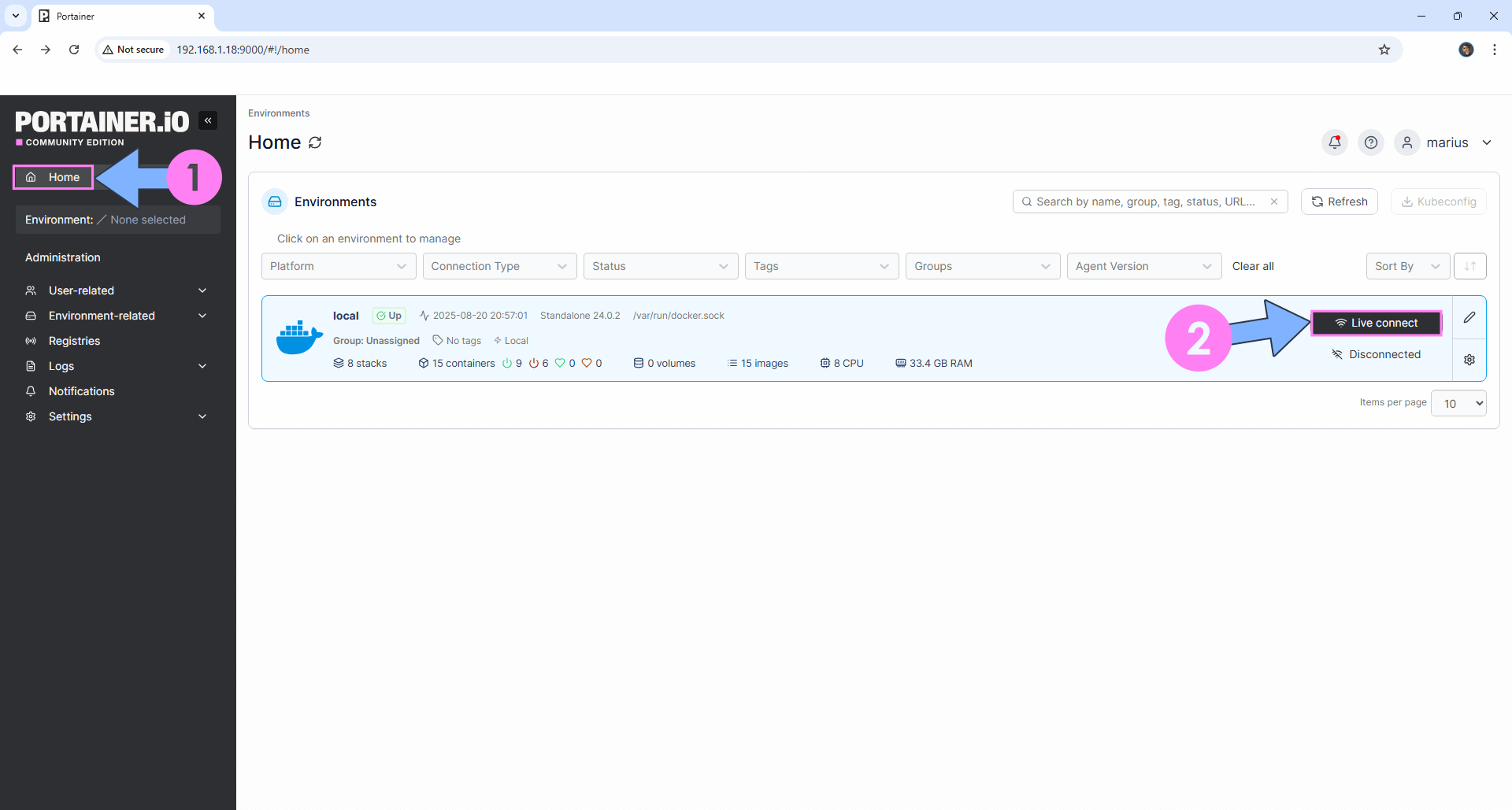
On the left sidebar in Portainer, click on Stacks then + Add stack. Follow the instructions in the image below.
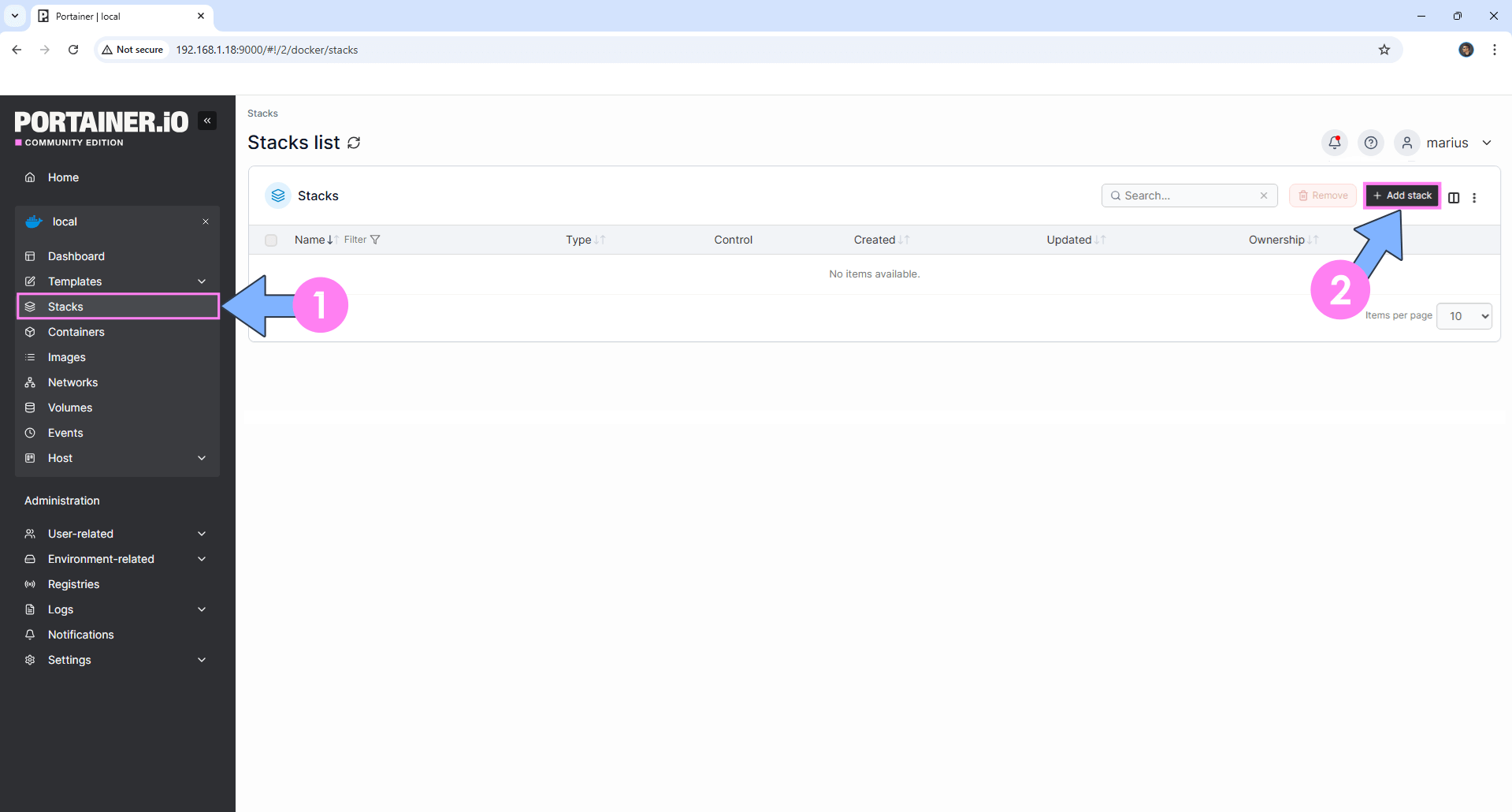
STEP 7
In the Name field type in frigate. Follow the instructions in the image below.
services:
frigate:
image: ghcr.io/blakeblackshear/frigate:0.15.1
container_name: Frigate
hostname: frigate
restart: on-failure:5
security_opt:
- apparmor=unconfined
- systempaths=unconfined
shm_size: 512mb
environment:
TZ: Europe/Bucharest
FRIGATE_RTSP_PASSWORD: mariushosting
#devices:
# - /dev/dri/renderD128 # for NAS with an Intel Hardware Accelerator
volumes:
- /etc/localtime:/etc/localtime:ro
- /volume1/docker/frigate/config:/config:rw
- /volume1/docker/frigate/media:/media/frigate:rw
- type: tmpfs
target: /tmp/cache
tmpfs:
size: 1000000000
ports:
- 5563:5000 #Web UI Interface Port
- 8554:8554 # RTSP feeds
- 8555:8555/tcp # WebRTC over tcp
- 8555:8555/udp # WebRTC over udp
Note: Before you paste the code above in the Web editor area below, change the value for TZ. (Select your current Time Zone from this list.)
Note: Before you paste the code above in the Web editor area below, change the value for FRIGATE_RTSP_PASSWORD with your own Cameras password. mariushosting is an example for a password.
Note: If your NAS supports Hardware Acceleration, in the compose above, you can remove the # hashtag from the devices part and from – /dev/dri/renderD128
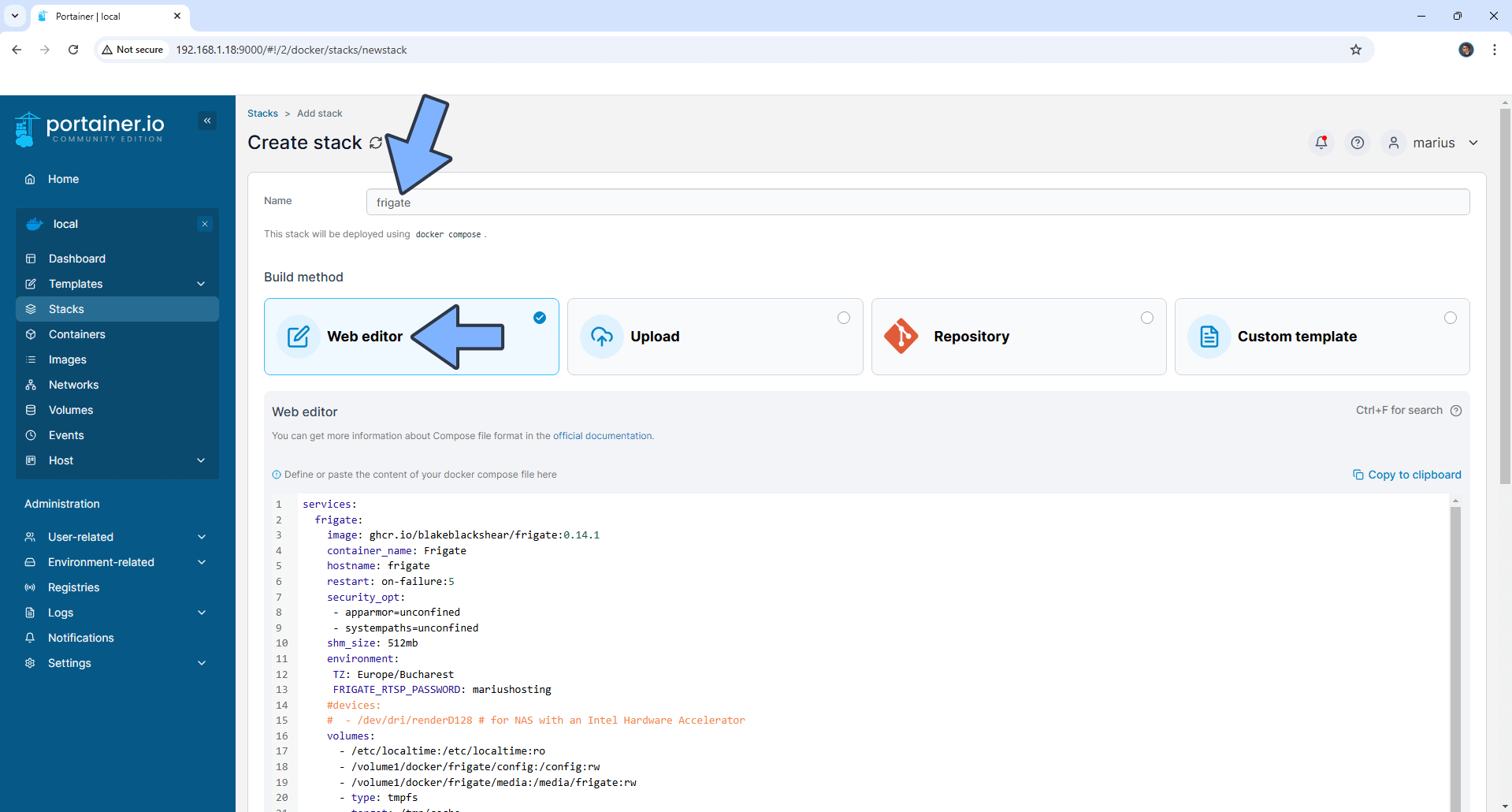
STEP 8
Scroll down on the page until you see a button named Deploy the stack. Click on it. Follow the instructions in the image below. The installation process can take up to a few minutes. It will depend on your Internet speed connection.
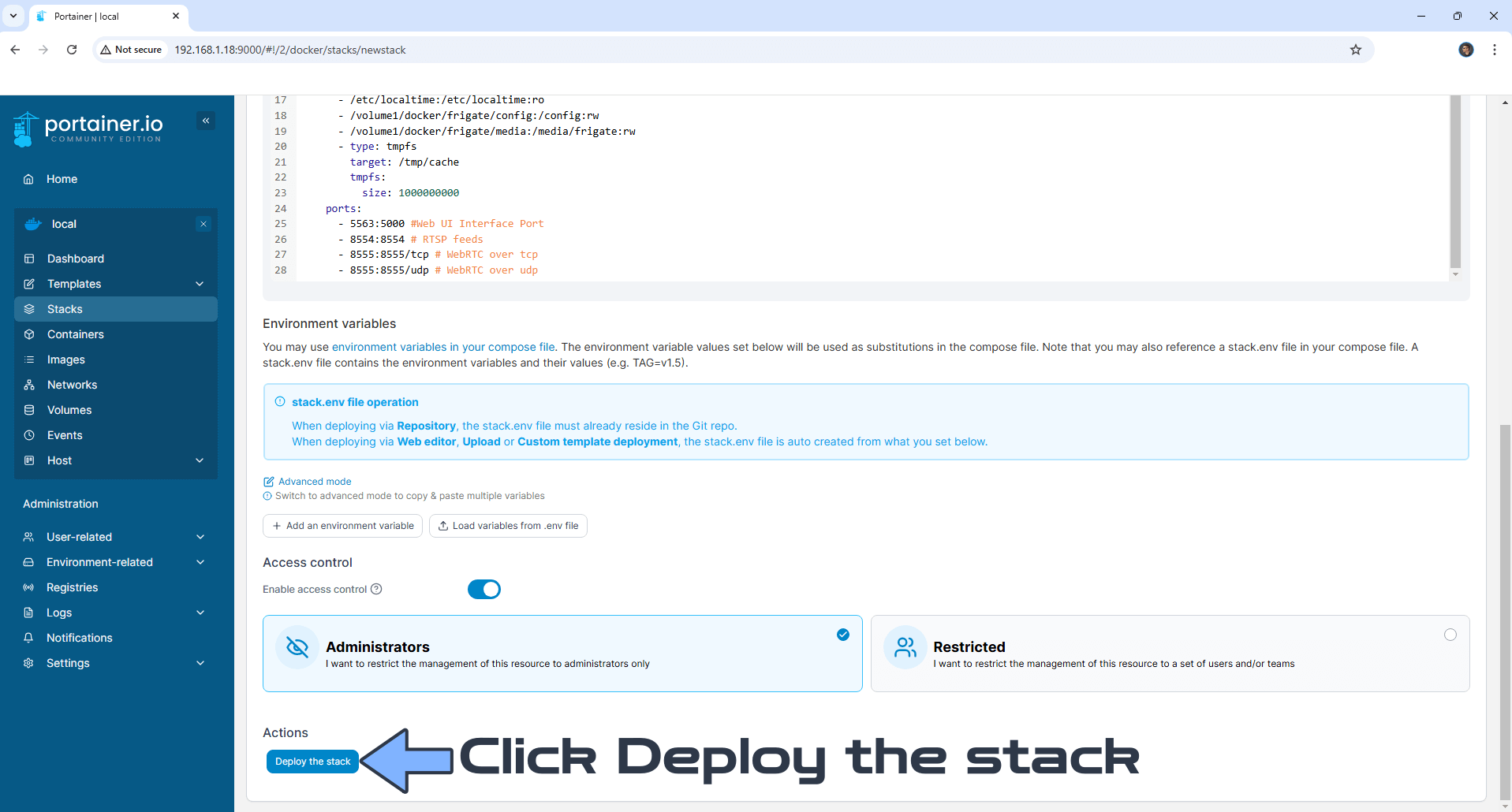
STEP 9
If everything goes right, you will see the following message at the top right of your screen: “Success Stack successfully deployed“.
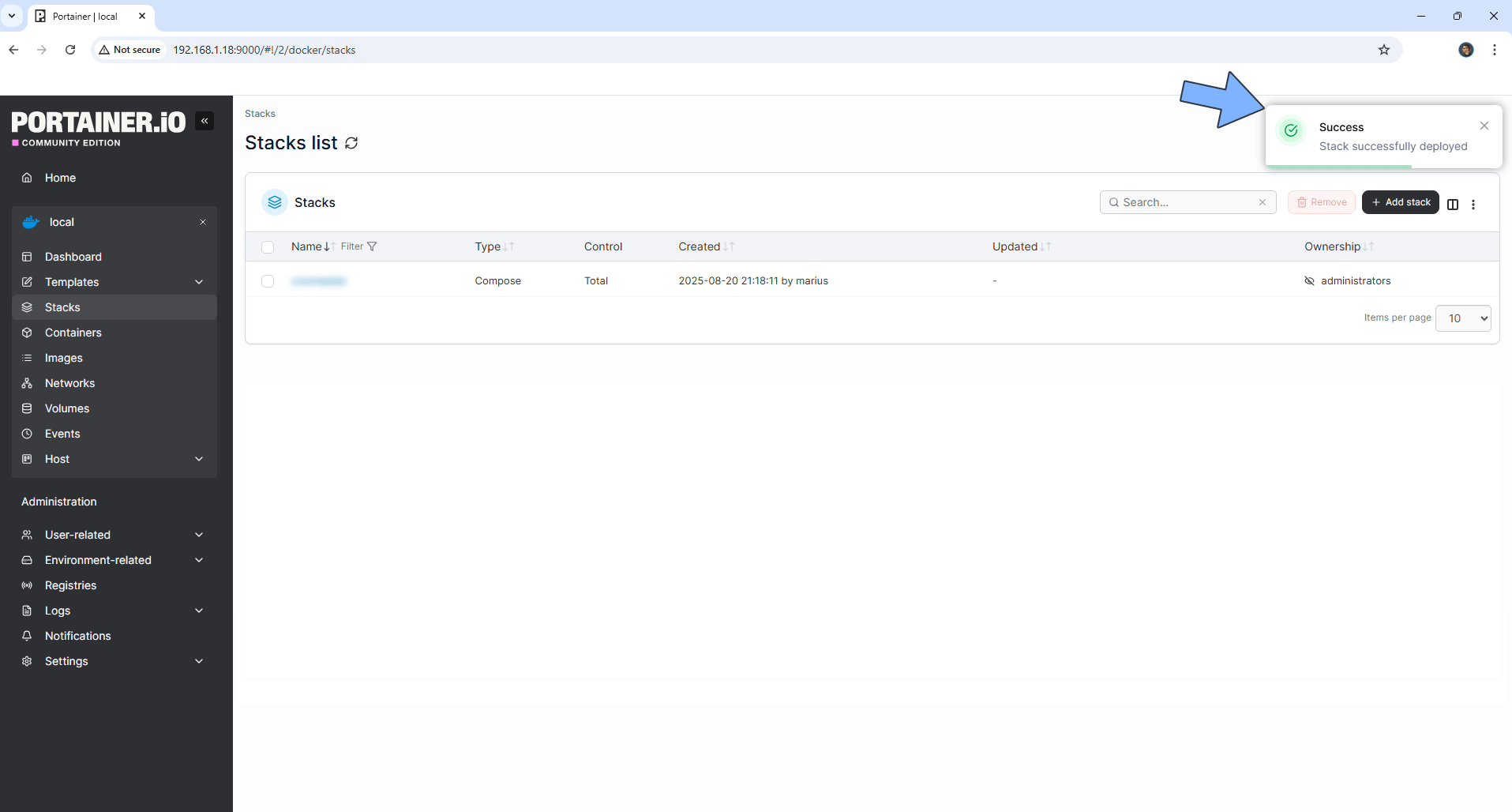
STEP 10
🟢Please Support My work by Making a Donation. Almost 99,9% of the people that install something using my guides forget to support my work, or just ignore STEP 1. I’ve been very honest about this aspect of my work since the beginning: I don’t run any ADS, I don’t require subscriptions, paid or otherwise, I don’t collect IPs, emails, and I don’t have any referral links from Amazon or other merchants. I also don’t have any POP-UPs or COOKIES. I have repeatedly been told over the years how much I have contributed to the community. It’s something I love doing and have been honest about my passion since the beginning. But I also Need The Community to Support me Back to be able to continue doing this work.
STEP 11
The installation process can take up to a few seconds/minutes. It will depend on your Internet speed connection. Now open your browser and type in http://Synology-ip-address:5563 Follow the instructions in the image below.
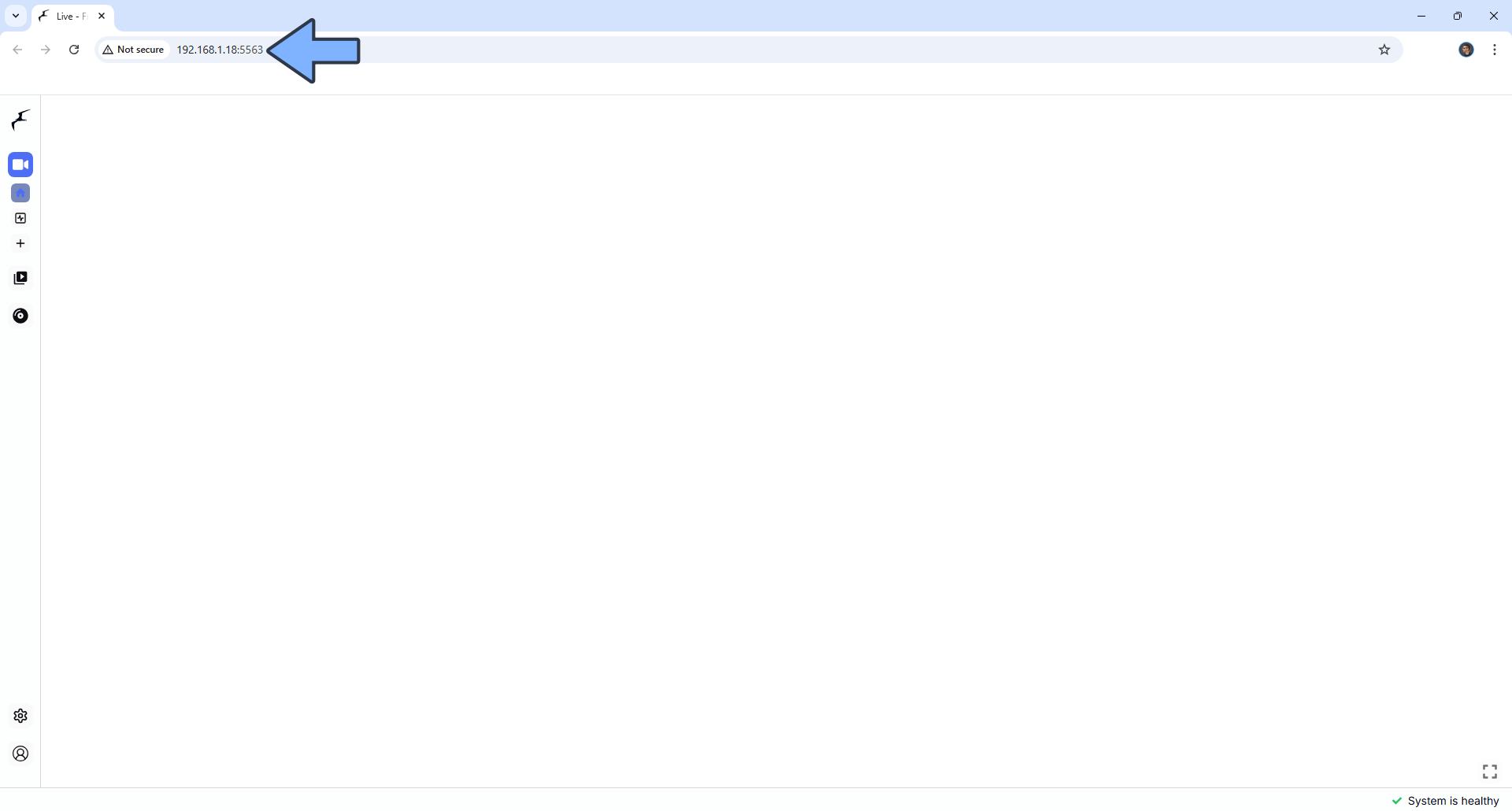
STEP 12
At the bottom left of the page, click the Settings icon. Click Dark Mode and Theme to change your theme colors. Follow the instructions in the image below.
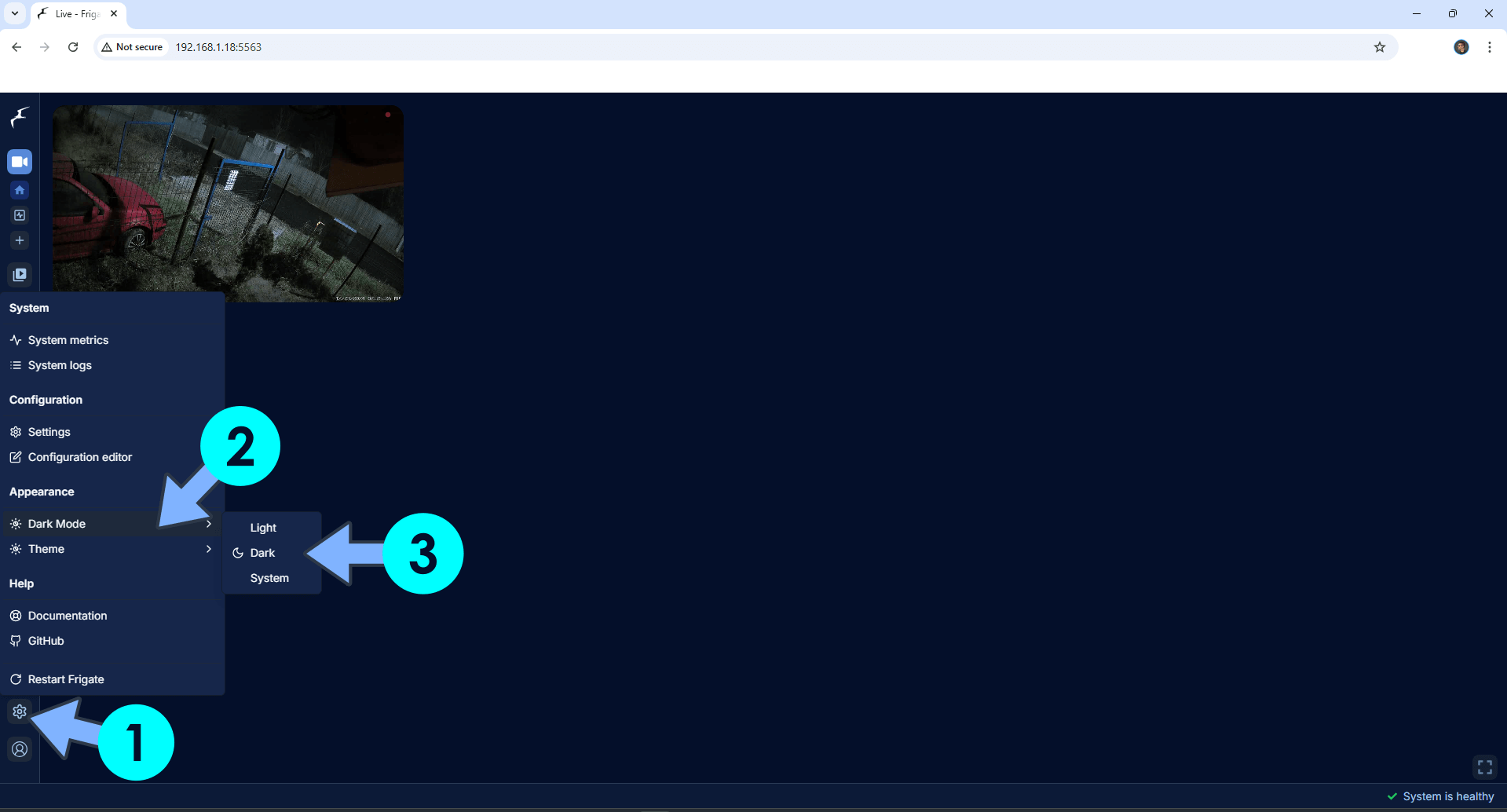
STEP 13
Add your first camera. At the bottom left of the page, click the Settings icon, then Configuration editor. Follow the instructions in the image below.
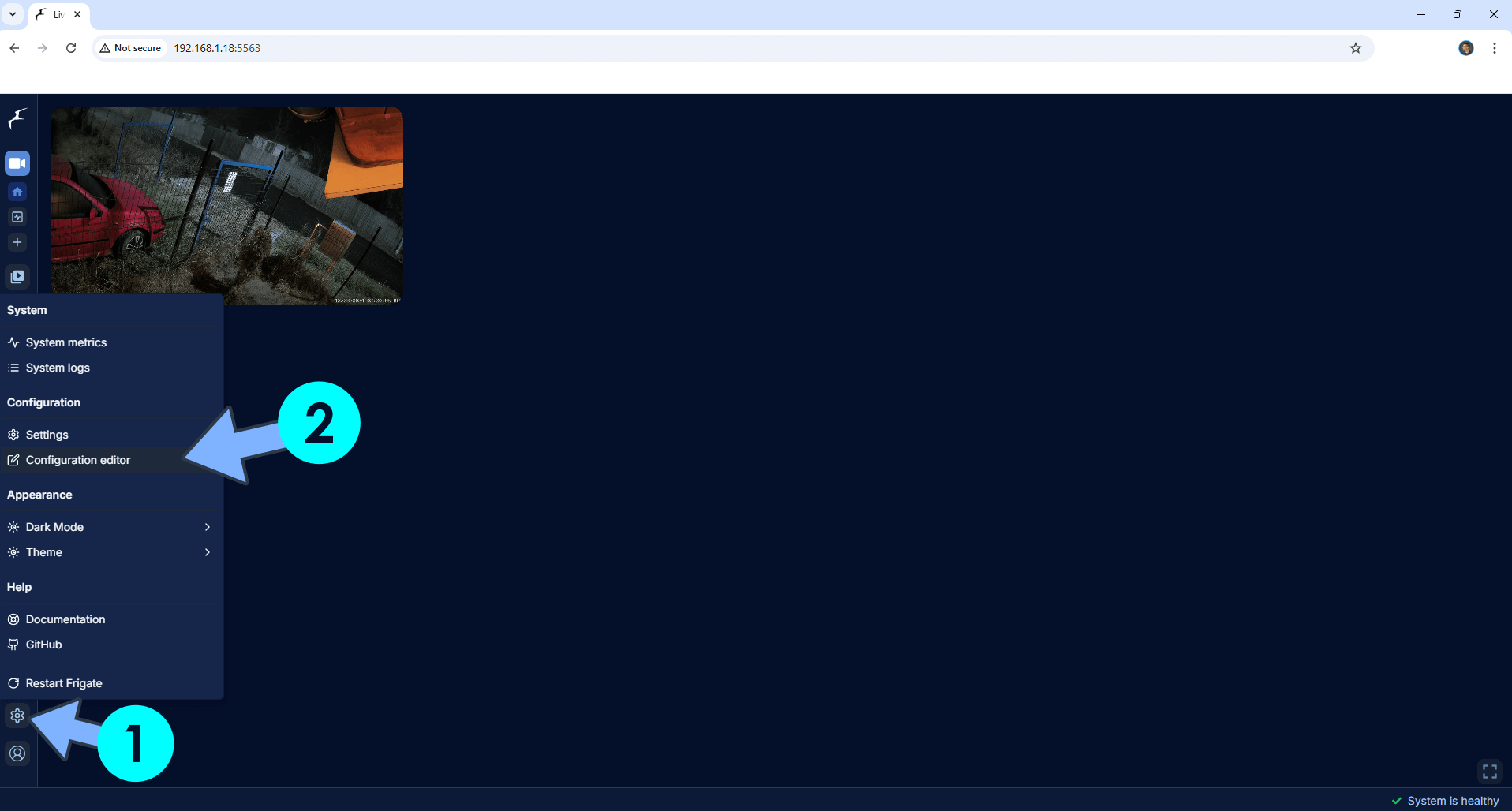
STEP 14
Type in the name of your camera, then add the RTSP address of your camera. Click Save & Restart. Follow the instructions in the image below. ⚠️Warning: Make sure the RTSP Setting is activated on your Camera. Check out my example with a Reolink Camera.
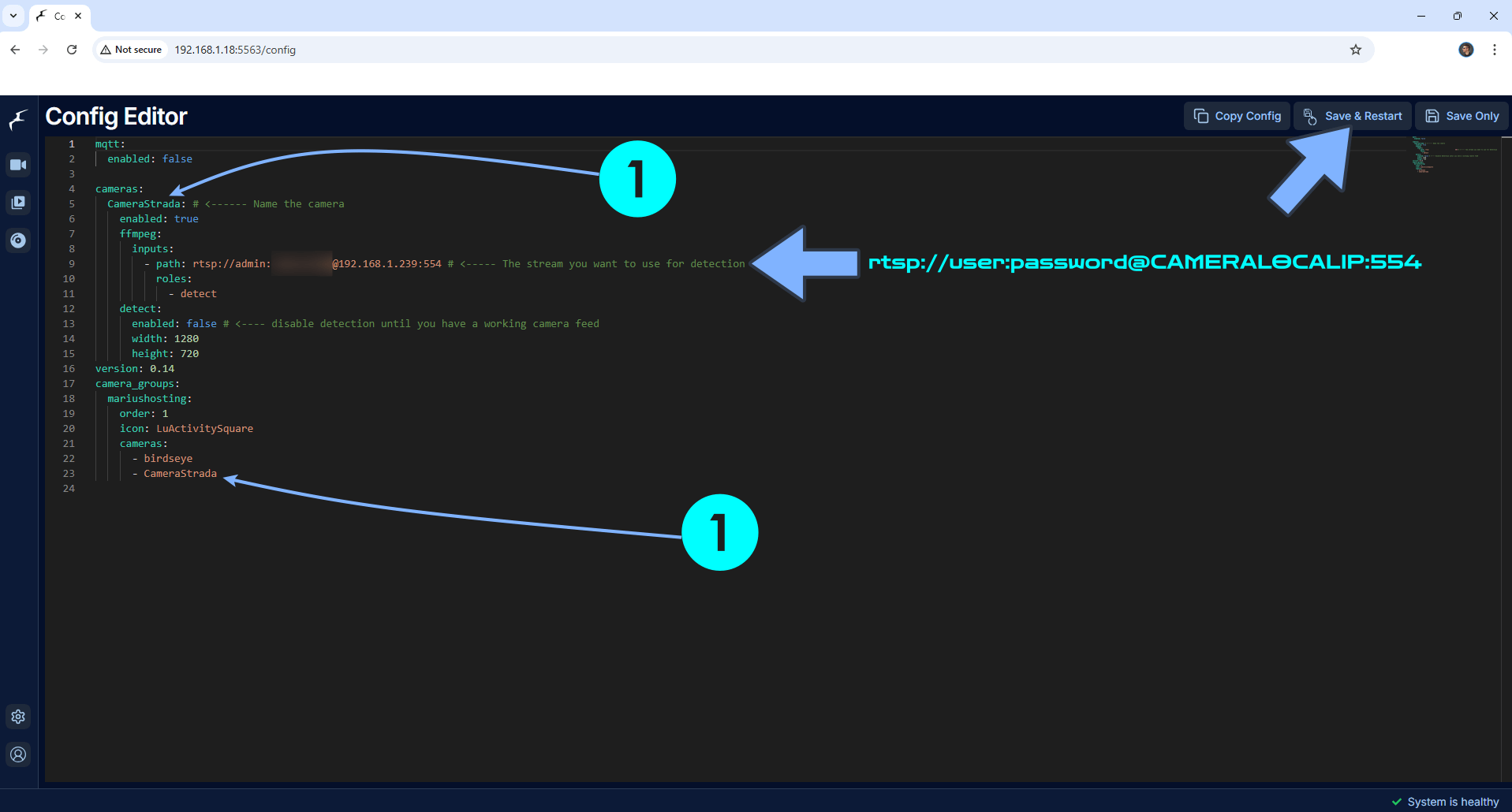
STEP 15
Your first camera at a glance!
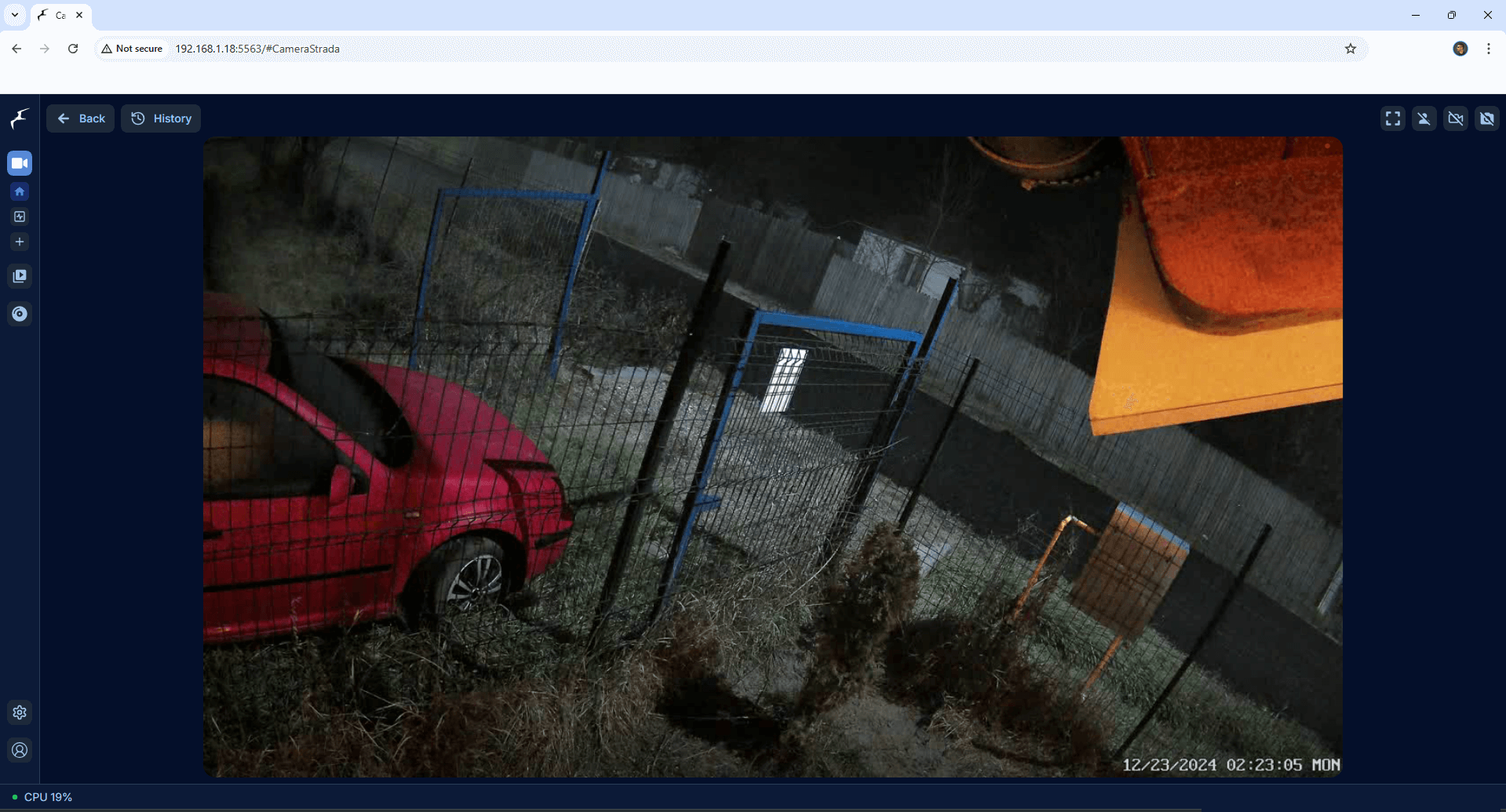
STEP 16
Your Frigate stats at a glance!
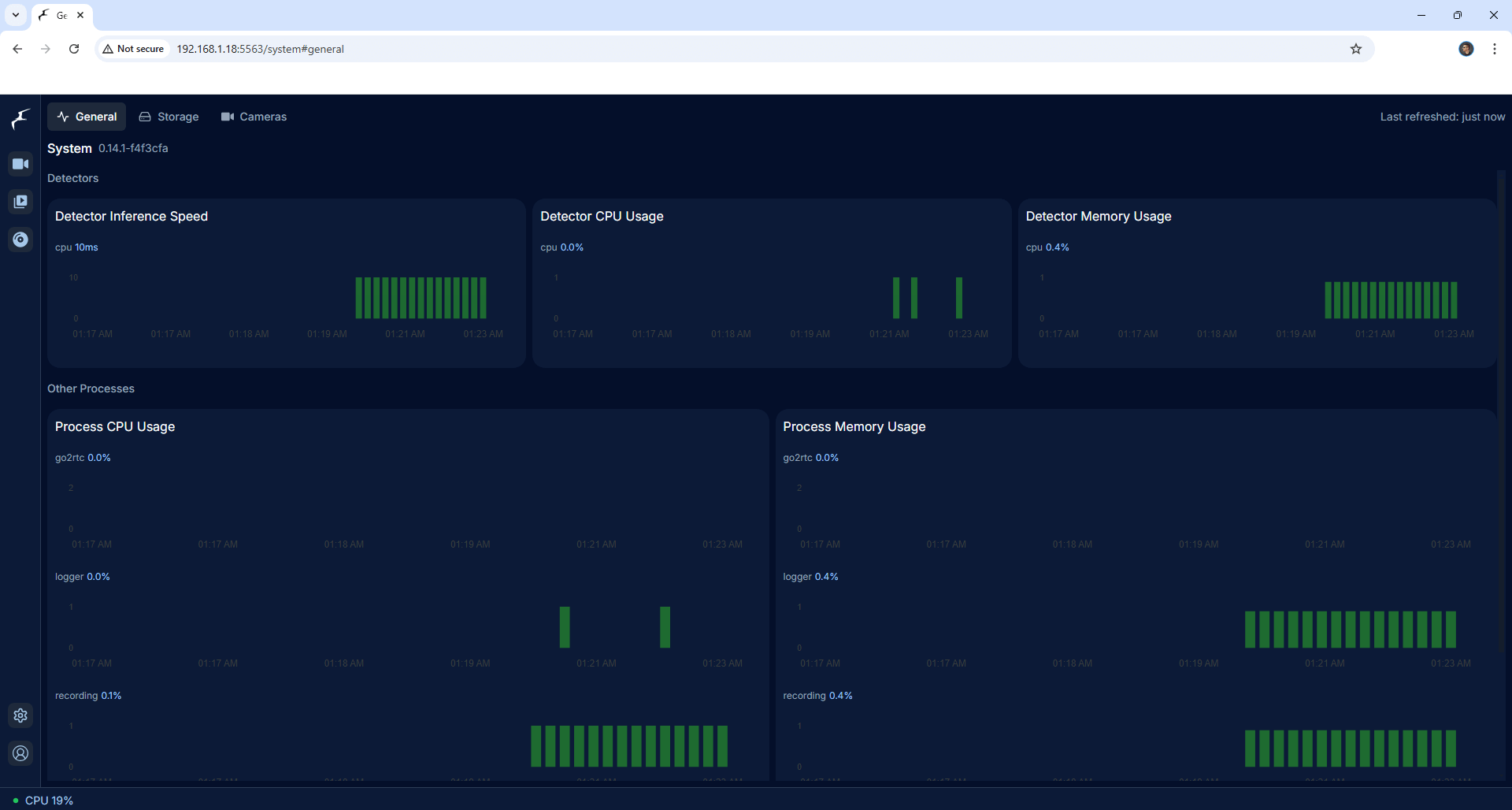
STEP 17
Instead of using the Configuration editor at STEP 13, you can manually modify the config.yaml file in /volume1/docker/frigate/config/config.yaml
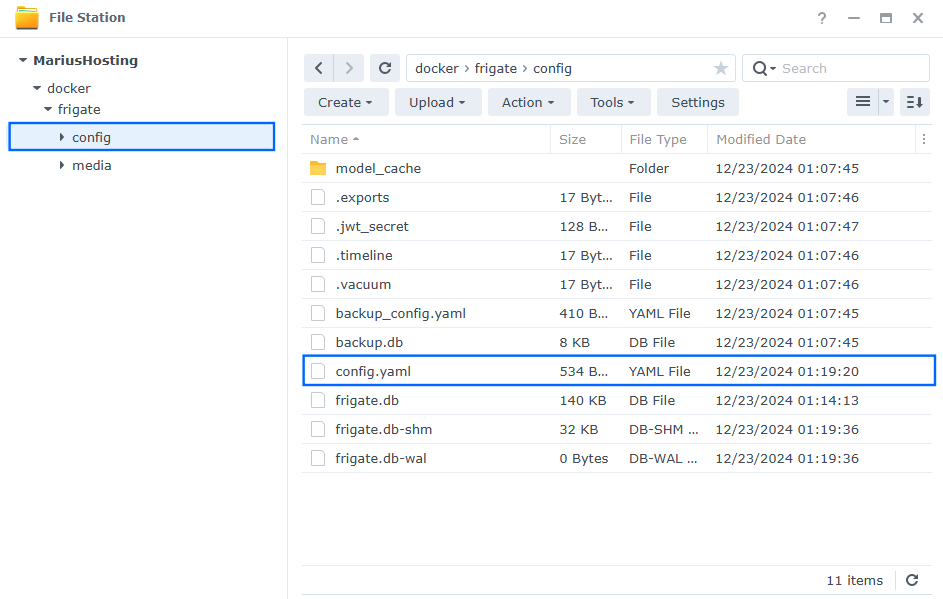
After you add your cameras, save your Frigate config file. ⚠️Note: You will need to have the Text Editor package installed to be able to open .yaml files as per the instructions at STEP 2.
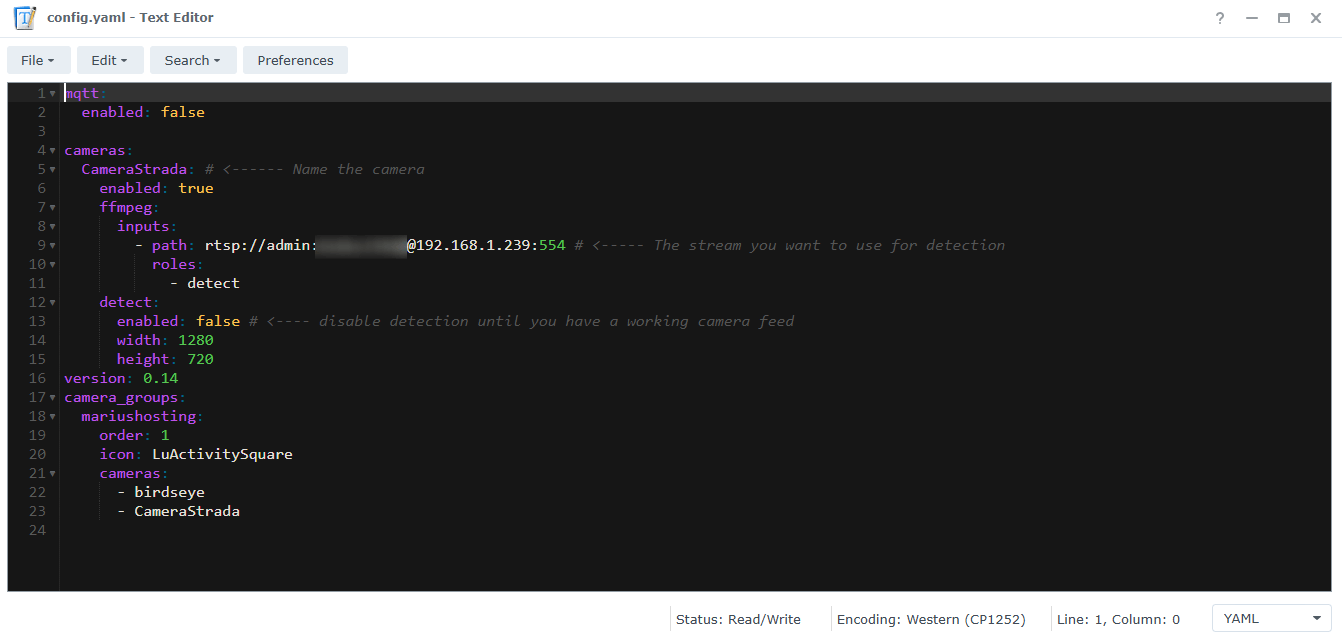
STEP 18
Check out the Full Frigate Documentation to add your Cameras.
Enjoy Frigate!
If you encounter issues by using this container, make sure to check out the Common Docker issues article.
Note: If you want to run the Frigate container over HTTPS, check How to Run Docker Containers Over HTTPS. In order to make Frigate work via HTTPS, it’s mandatory to activate WebSocket.
Note: Can I run Docker on my Synology NAS? See the supported models.
Note: How to Back Up Docker Containers on your Synology NAS.
Note: Find out how to update the Frigate container with the latest image.
Note: How to Free Disk Space on Your NAS if You Run Docker.
Note: How to Schedule Start & Stop For Docker Containers.
Note: How to Activate Email Notifications.
Note: How to Add Access Control Profile on Your NAS.
Note: How to Change Docker Containers Restart Policy.
Note: How to Use Docker Containers With VPN.
Note: Convert Docker Run Into Docker Compose.
Note: How to Clean Docker.
Note: How to Clean Docker Automatically.
Note: Best Practices When Using Docker and DDNS.
Note: Some Docker Containers Need WebSocket.
Note: Find out the Best NAS Models For Docker.
Note: Activate Gmail SMTP For Docker Containers.
This post was updated on Sunday / October 26th, 2025 at 1:22 AM
